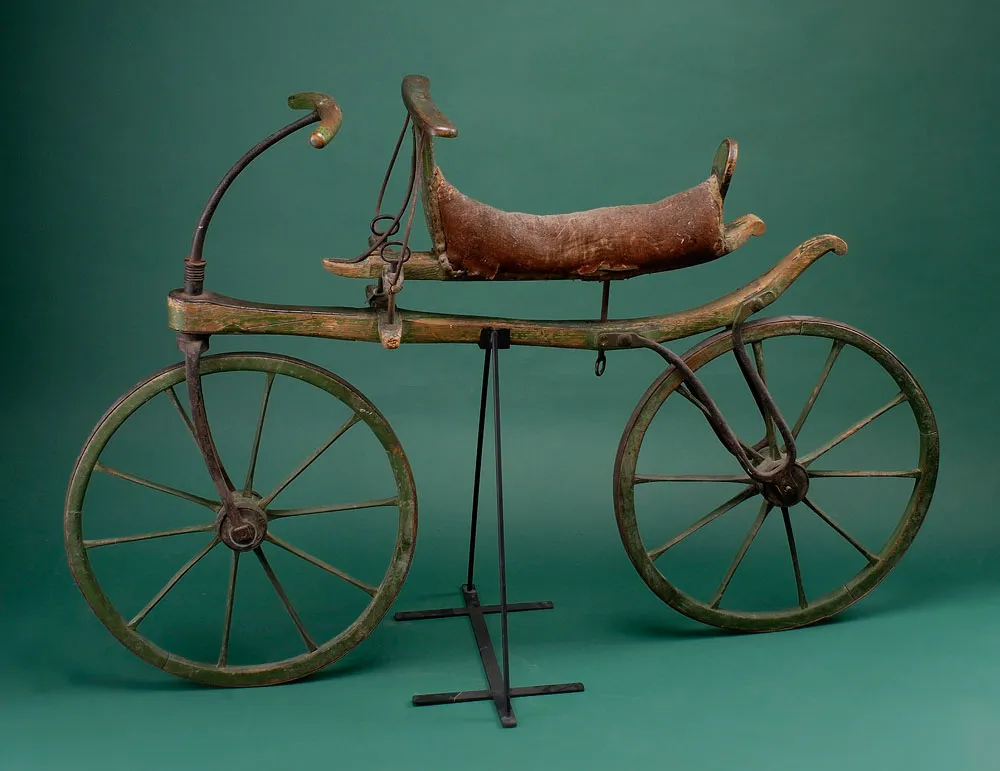This Wooden Running Machine Was Your Fixie’s Great-Great Grandpa
The draisine was invented as a potential replacement for the horse during a shortage
/https://tf-cmsv2-smithsonianmag-media.s3.amazonaws.com/filer/41/34/4134212e-602d-4b5a-bc90-47a280969781/draisine1817.jpg)
Long before the fixed-gear craze hit trendy cities like New York, fancy young men could be found riding the draisine.
Also called the Laufmaschine (running machine) and the hobby horse (in England), this invention was patented on this day in 1818. Its inventor, Baron Karl von Drais de Sauerbrun, had worked as a forester as well as an inventor, writes Randy Alfred for Wired.
Drais intended for his invention to have practical uses: he “was looking for a substitute for the horses that had starved to death in the recent volcanic winter caused by the eruption of Mount Tambora,” writes Alex Q. Arbuckle for Mashable. But what he came up with wasn't quite as elegant as riding a horse. The draisine's operator sat on the vehicle like a modern bicycle, but used their feet to push the contraption along, like a child's balance bike today. Braking was also accomplished with feet.
The invention's primary use wasn't as a tool, writes Ella Morton for Atlas Obscura. “The contraptions were priced above the means of the working class, leading them to become a toy for pleasure-seeking dandies—hence another one of the velocipede’s nicknames: the ‘Dandy Horse,’” she writes.
And it wasn’t just young men who got in on the action. A step-through version designed for women riders was introduced in 1820, although this was near the end of the draisine fad. And the draisine also had some eighteenth-century touches, writes Alfred. “The devices were often graced with equine figureheads, or even carved dragons or elephants,” he writes.

“Riding downhill at high speed was a particularly enjoyable activity that compensated for the draisine’s lack of a propulsion mechanism,” writes the National Museum of American History. The draisine made it from Europe to America, and in eastern cities rinks for riding them as well as draisine rentals became available.
But draisine riders in cities didn't make many friends with pedestrians. Roads were too bumpy, so riders in London and other cities used the sidewalks. “London caricaturists had a fine time lampooning these cravat-wearing sidewalk menaces who trotted along on their running machines,” Morton writes.
In the end, this controversy lead to an out-and-out war with pedestrians that helped to end the draisine craze, Arbuckle writes. It also didn’t help that the draisine, unlike the horse, was impractical and expensive enough to be out of reach for most people. By 1820, the fad was over. But not before the vehicle started something that would culminate in today’s bicycles.
“The draisine is historically significant because it was the first widely-available vehicle that was not animal-powered, and it intrigued many people with the possibility of moving about on a personal, mechanized vehicle,” the museum writes.